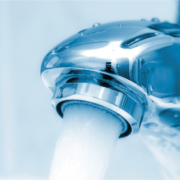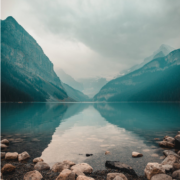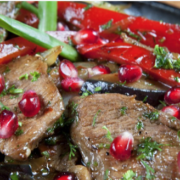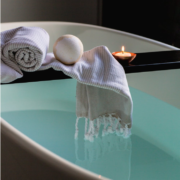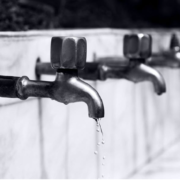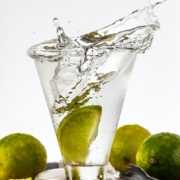You probably know it – the little red descaling symbol on the coffee machine. It often flashes for weeks until you eventually take your time, buy decalcifier and look for the instructions for use. If you descale regularly, you protect your device. If the pipes are calcified, the water flows through more slowly and is not heated up as quickly. The coffee machine needs more energy, is louder and can potentially result in high repair costs. Many manufacturers also state that the guarantee is void if you do not descale your coffee machine regularly.
Four hundred cups of coffee – or a thousand?
How often the coffee machine needs to be descaled is not that easy to say. Some manufacturers state that the descaling symbol starts to light up after four hundred cups, with others it only flashes after a thousand. So these are only rough approximations. In truth, it depends on how hard the water is together, hard water must be descaled more often than soft water. If you use softening technology in your household, it will save you a lot of work. The descaling symbol is a good reference point. If you stick to it, you will at least regularly descale.
Another rule of thumb is to descale the coffee machine two to four times a year. Your own coffee consumption can also be used as a guide. With average water hardness and two cups a day, you should descale every six months, with eight cups or more every two months. But you may also notice yourself when it is time to descale. A dull taste, a cup that is less full or the coffee is less hot can be signs of limescale build-up inside the machine. With filter coffee machines and older models without a descaling symbol, you have to rely on such assessments anyway.
Chemical descaler and descaling with home remedies
An acid is required for descaling. Whether this is in a chemical product from the supermarket or you are using a home remedy use does not matter in principle. Most coffee machine manufacturers recommend a specific product that they have tested their equipment with and that they can guarantee. But that doesn’t mean that any other remedy is bad for the coffee maker. Universal descaler often have the same ingredients as more expensive branded products. It is important to observe the correct mixing ratio according to the manufacturer.
Make the descaler yourself
If you want, you can make a chemical descaler yourself. Many branded products work with sulfamic acid, which can be ordered online in large containers. You should be careful with the dosage – if the coffee machine heats the descaling solution, it must not be too concentrated. Otherwise it can lead to failures, which means that acid crystals settle inside. The heat intensifies the effect of the acid so that it decalcifies effectively even in low concentrations. The following mixing ratio should not be exceeded:
- Hot decalcification: 15 grams of sulfamic acid per liter of water
- Cold decalcification: 100 grams of sulfamic acid per liter of water
Home remedies only at your own risk
Home remedies are often used for descaling. What about the kettle works well, but doesn’t necessarily fit the coffee maker. Machine manufacturers advise against using vinegar, for example, as it can damage the rubber seals in the devices. It can also remain in the coffee’s taste. Citric acid is not necessarily suitable for descaling the coffee machine. If the acid is heated, it combines with lime and can form even more stubborn deposits. You can have success with it, but at your own risk. One cup of vinegar is mixed with two cups of water; for citric acid, one tablespoon is added to the full water tank. Some swear by dissolving a denture cleaner tablet, an aspirin or a packet of baking powder in a full water tank and running the descaling program with it. This can definitely work for less stubborn calcifications.
Descaling the coffee machine – this is how it works
The first thing to do is to clarify whether the coffee machine has its own descaling program. This is the case with most espresso machines and fully automatic coffee machines; modern filter coffee machines usually also have such a program.
These notes are very general because every coffee maker is different. We have summarized some special features of the individual manufacturers. Perhaps they can help you, otherwise you will also find links to the manufacturer’s pages.
Descale the Senseo coffee machine
Philips, the manufacturer of Senseo, recommends descaling at least once every three months. After four hundred cups of coffee, the descaling light with the inscription “CALC” starts to glow. When the coffee is just lukewarm, the cup is not as full as usual or the finished drink has no foam, it is time to descale. You can find detailed videos on descaling the individual models here on the Philips page .
Descale the Dolce Gusto coffee machine
According to the manufacturer, a Dolce Gusto coffee machine should be descaled twice a year. With most models, you can switch to descaling mode by pressing and holding the power button for five seconds. The maximum must be selected for the dosage, then either hot or cold can be decalcified as desired by pressing the corresponding button. The manufacturer also offers video instructions on the own page .
Descale the Tassimo coffee machine
A red descaling LED also lights up on Tassimo coffee machines when the machine thinks that a lot of limescale has already deposited. A special decalcifying disc is required for descaling. This is a small, yellow or orange disc that comes with the coffee maker. You can usually find this behind the water tank. The cleaning disc is inserted like a normal coffee disc; only then can the process be started. To do this, keep the start button pressed for a few seconds. On the Tassimo page you can choose your model and find a detailed description.
Descale the Nespresso coffee machine
Nespresso recommends descaling the coffee machine at least twice a year. Almost all models draw attention to the upcoming decalcification anyway. Before starting the process, all capsules must be removed and the decalcifying liquid added. You can switch to descaling mode by pressing and holding the buttons for the coffee size at the same time. Some models have two such buttons, some three. Start the process by pressing the Lungo button. To return to normal mode after the process, simply press and hold the coffee size buttons again for a few seconds. You can find detailed information on this directly at Nespresso .
Descale the Cafissimo coffee machine
Cafissimo coffee machines also have a descaling lamp that draws attention to itself at regular intervals. Depending on the model, there are different options for entering the descaling mode. To do this, either the top and middle coffee type buttons or the steam button and the ON button together or the caffe crema button are held down. You can find a detailed video description of your model on Tchibo blog .
Descale the Delonghi coffee machine
A red LED lights up on Delonghi when it is time to descale. In principle, this works via the frothing nozzle. The descaling liquid is added, the descaling mode is selected and the steam knob is fully opened. The program then runs by itself. Anyone who has misplaced their operating instructions and no longer remembers how to get into the descaling mode can find all the information on here Delonghi coffee machines .


